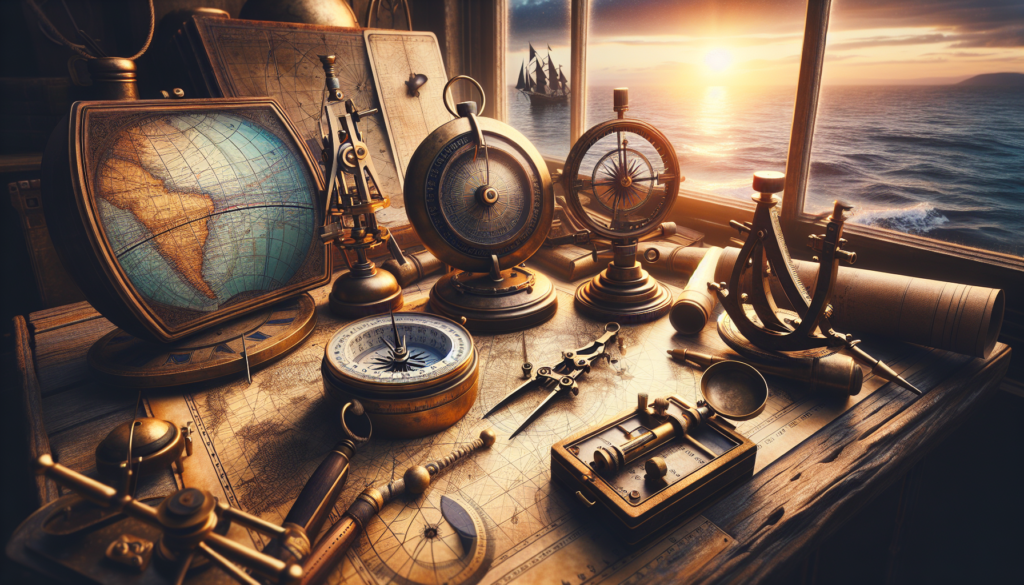Nautical Navigation Tools: A Comprehensive Guide
Embark on a voyage through the fascinating world of nautical navigation tools, where ancient wisdom meets cutting-edge technology to guide sailors across the vast oceans. From the humble compass to sophisticated GPS systems, these tools have played a pivotal role in shaping maritime history and ensuring safe passage for seafarers. Join us as we delve deep into the intricacies of these instruments, exploring their evolution, applications, and significance in the modern era.
The Ancient Mariners: A Historical Perspective
Thousands of years ago, when explorers set sail into the unknown, they relied on rudimentary tools to navigate the treacherous waters. One of the earliest and most essential instruments was the astrolabe, a device used to determine the altitude of celestial bodies such as the sun or stars. By measuring the angle between the horizon and a celestial body, sailors could calculate their latitude and approximate their position at sea.
Another indispensable tool was the magnetic compass, which revolutionized navigation by providing a reliable reference point regardless of the weather or time of day. Developed in ancient China and later adopted by European sailors, the compass enabled mariners to maintain a consistent heading and navigate with greater precision.
As maritime exploration expanded during the Age of Discovery, navigators began using more advanced instruments such as the quadrant, cross-staff, and backstaff to measure angles and determine their position relative to the sun or stars. These early tools laid the foundation for modern navigation techniques and helped sailors chart new territories across the globe.
The Advent of Modern Navigation Tools
With the dawn of the 20th century came a revolution in navigation technology, as advancements in science and engineering propelled the development of new and innovative instruments. One of the most significant breakthroughs was the invention of the sextant, a precision instrument that replaced older angle-measuring devices and allowed for more accurate celestial navigation.
Alongside the sextant, radio navigation systems such as LORAN (Long Range Navigation) and Decca were introduced to provide mariners with electronic aids to fix their position relative to known radio beacons. These systems marked a significant leap forward in navigational accuracy and safety, reducing the reliance on traditional celestial methods.
However, the most revolutionary development in modern navigation came with the advent of the Global Positioning System (GPS) in the late 20th century. Consisting of a network of satellites orbiting the Earth, GPS enables ships to pinpoint their exact location with unparalleled precision, revolutionizing maritime navigation and ensuring safe and efficient passage on the high seas.
The Role of Nautical Charts and Instruments
In addition to navigational tools, the importance of nautical charts cannot be overstated in guiding ships through complex waterways and hazardous shoals. Nautical charts are detailed maps of the sea floor, coastline, and navigational aids, providing essential information for plotting courses and avoiding obstacles.
Accompanying nautical charts are a variety of instruments used for measuring depth, speed, and direction, such as echo sounders, logbooks, and gyrocompasses. These instruments work in tandem with navigational tools to ensure accurate and reliable positioning, allowing sailors to navigate with confidence in any weather conditions.
Moreover, the integration of electronic chart systems (ECS) and electronic navigational charts (ENC) has further enhanced navigation efficiency by digitizing traditional paper charts and providing real-time updates on vessel position and course. These digital tools have revolutionized maritime operations, offering increased accuracy and situational awareness for modern seafarers.
Challenges and Controversies in Nautical Navigation
Despite the advancements in navigation technology, mariners continue to face challenges and controversies in navigating the world’s oceans. One of the primary concerns is the threat of cyber attacks on GPS systems, which could disrupt or falsify positioning data and compromise vessel safety.
Another contentious issue is the reliance on electronic navigation aids at the expense of traditional skills, leading to the potential loss of essential knowledge and expertise among seafarers. While GPS and ECS provide invaluable support, they should be viewed as complementary tools rather than substitutes for traditional navigation methods.
Furthermore, the proliferation of autonomous ships and unmanned vessels raises questions about the future role of human navigators in maritime operations. As technology continues to evolve, the balance between automation and human intervention remains a key consideration for the maritime industry.
Expert Opinions: Perspectives from Nautical Navigation Specialists
To gain further insights into the world of nautical navigation tools, we reached out to experts in the field for their perspectives on the evolving landscape of maritime technology. Captain John Smith, a seasoned navigator with over 30 years of experience, emphasized the importance of integrating traditional and modern navigation techniques to ensure safe and efficient passage.
According to Professor Emily Jones, a leading researcher in marine navigation systems, the key to effective navigation lies in continuous training and education for sailors to adapt to changing technology and operational requirements. By fostering a culture of learning and innovation, the maritime industry can stay ahead of the curve and navigate future challenges with confidence.
Conclusion: Navigating the Seas of Tomorrow
In conclusion, nautical navigation tools have come a long way from their humble beginnings, evolving into sophisticated systems that enable mariners to traverse the world’s oceans with precision and confidence. From ancient astrolabes to modern GPS technology, these instruments have shaped the course of maritime history and continue to play a vital role in ensuring safe and efficient passage for ships of all sizes.
As we look to the horizon of the future, it is clear that the evolution of navigation technology will only accelerate, with new advancements such as autonomous vessels and artificial intelligence reshaping the maritime landscape. By embracing innovation while preserving essential skills and knowledge, sailors can navigate the seas of tomorrow with skill and expertise, ensuring a safe and prosperous voyage for generations to come.



